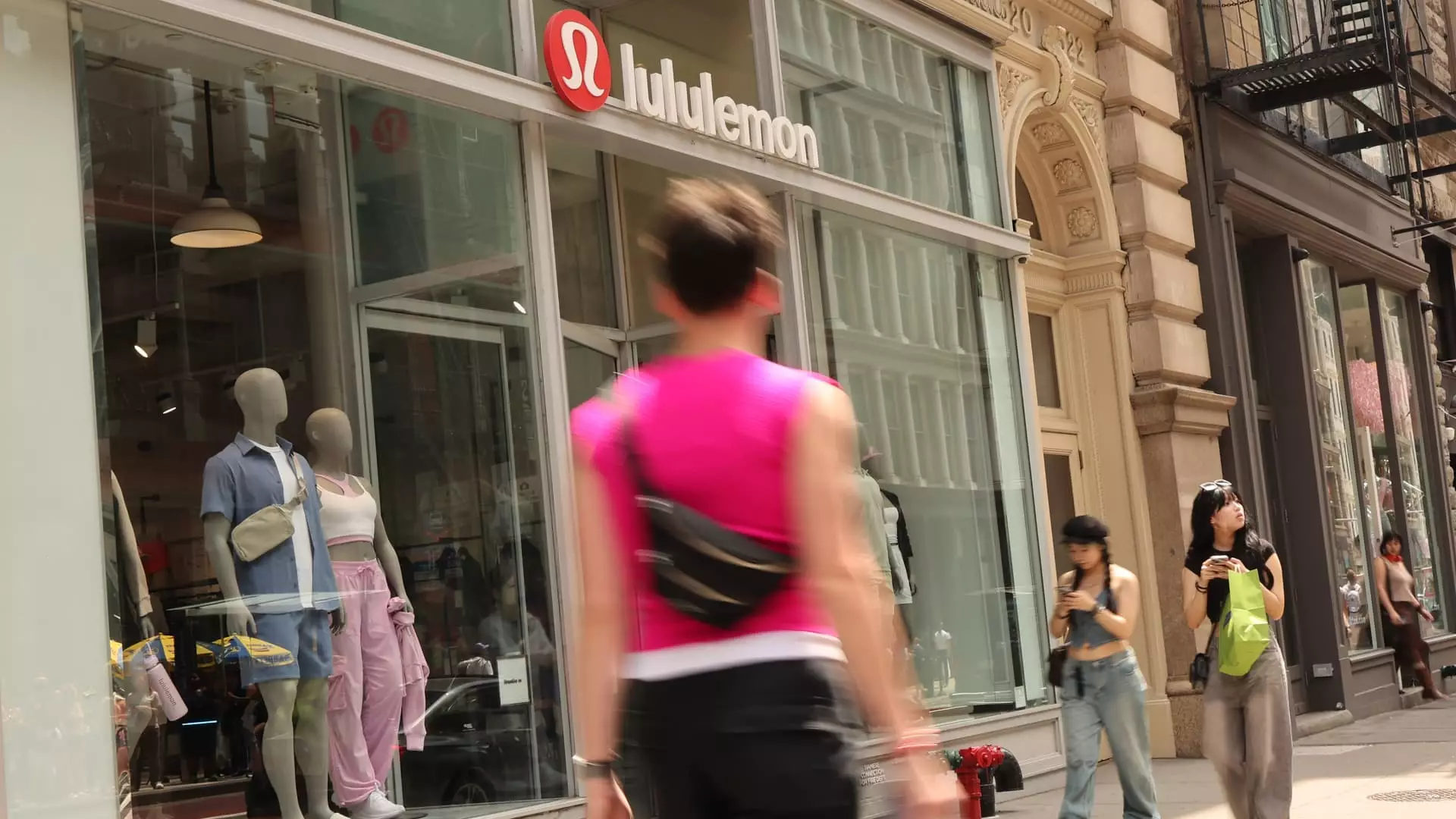Lululemon Athletica’s recent fiscal first-quarter report painted a curious picture of success intertwined with emerging challenges. On one hand, the activewear giant managed to outperform Wall Street expectations by posting earnings per share of $2.60 against an anticipated $2.58, alongside revenues of $2.37 billion, surpassing the forecast of $2.36 billion. Yet beneath this surface of triumph lies a troubling undercurrent that cannot be ignored: a downward revision of its full-year earnings guidance due to what it describes as a “dynamic macroenvironment.”
The very phrase “dynamic macroenvironment” invites skepticism; it implies an unpredictable climate that many companies are wrestling with in the 21st century, particularly in the wake of complex international trade policies. Lululemon’s CEO, Calvin McDonald, remains optimistic, declaring intentions to leverage the company’s “strong financial position and competitive advantages.” However, one must wonder if this optimism veils a more profound underlying panic—an attempt to reassure stakeholders amid brewing economic storms.
Market Volatility and Investor Reaction
Despite the promising numbers, investors swiftly sold off shares, resulting in a staggering 20% drop in after-hours trading. This serves as a potent reminder that stock market reactions are often less about the actual data and more about perceptions and expectations. Lululemon’s cut to its full-year earnings projection—from a previous estimate of $14.95 to $15.15 down to $14.58 to $14.78—signals concern and highlights a growing sentiment of anxiety regarding the retail sector’s future.
In contrast to Lululemon’s isolated performance, many retailers are facing a similar fate. Notably, brands like Abercrombie & Fitch and American Eagle Outfitters have walked a tightrope of uncertainty, either revising their forecasts downward or outright withdrawing them. The retail landscape is gruesomely littered with the debris of once-prominent names now grappling with the aftermath of economic fluctuations.
Tariffs and the Supply Chain Dilemma
The looming shadow of tariffs continues to exacerbate the situation. After President Trump’s sweeping tariff announcements earlier this year, retailers have been forced to prepare for cascading consequences. Lululemon finds itself in a precarious position, with a significant portion of its products (40%) produced in Vietnam. With the policy changes threatening to impact a variety of sectors, the company now faces a daunting dilemma: how to maintain profitability while grappling with supply chain disruptions and elevated production costs.
When rival companies like Nike announce price hikes in response to tariffs without specifying that the tariffs are the prime reason, consumers begin to question the integrity of the pricing structure across the board. Lululemon’s strategy may now involve navigating an intricate dance—while attempting to sustain growth, the brand must weigh the repercussions of price increases against consumer loyalty and market demands.
Mixed Signals in Sales Performance
Reflecting on the company’s comparable sales, one cannot overlook the mere 1% growth year-over-year—a stark contrast to Wall Street’s more optimistic expectation of 3%. This metric, while it could be dismissed as a slight bump in the road, actually indicates a slow pilgrimage towards stagnation, especially when evaluating geographical performances. The American market reported a 2% decline, while international sales managed a 6% uplift, suggesting that the brand’s appeal may be waning domestically.
Lululemon’s gross margin performance, while outperforming expectations at 58.3%, raises further questions. Is this a typical reflection of their operational strength, or rather a temporary facade hiding deeper operational inefficiencies? The stark contrast between marginally positive growth and a revealing revenue outlook creates layers of complexity in how investors, stakeholders, and consumers perceive the brand.
Lululemon undoubtedly stands at a critical crossroads. It cannot afford to become complacent, clinging onto past successes while the economic landscape shifts unpredictably beneath its feet. The promise of growth may serve as a beacon, yet, much like a mirage in a desert, it could easily vanish if the company does not adapt swiftly and decisively to the challenges at hand. In these turbulent times, the path forward remains laden with uncertainty, leaving their loyal consumer base questioning: will Lululemon rise above these obstacles, or will it falter under the weight of precarious market dynamics?


Leave a Reply